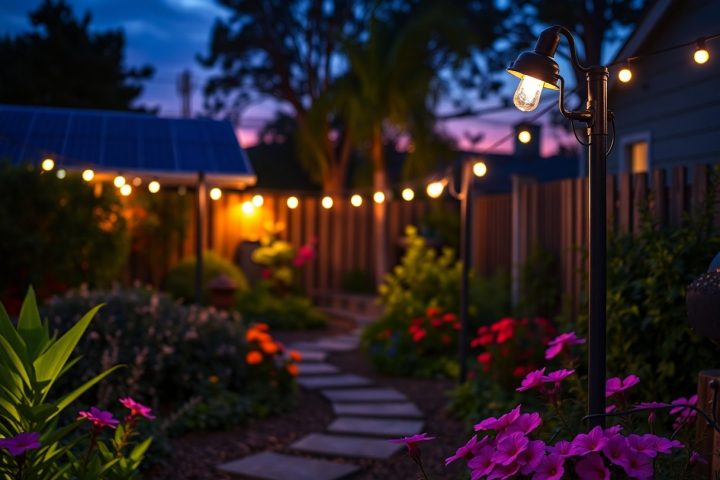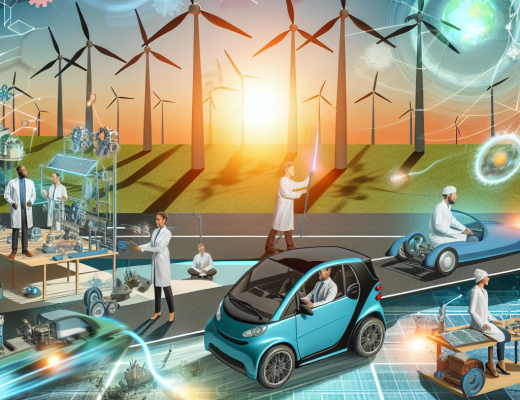Solar lighting harnesses the power of the sun to illuminate your outdoor spaces efficiently and sustainably. By converting sunlight into electricity, solar-powered lights offer a practical solution for both ambient and security lighting. You can effortlessly eliminate your dependence on traditional power sources while enjoying reduced energy costs. In this post, you’ll discover how solar lighting operates, its various components, and the numerous benefits it can bring to your home or garden.
Understanding Solar Lighting
As you explore into the world of solar lighting, it’s vital to grasp how it functions and why it is increasingly favored in various applications. Solar lighting harnesses the sun’s energy to illuminate spaces efficiently, providing not only a sustainable lighting option but also significant cost savings in the long run. It comprises various components that work in harmony to facilitate energy capture and usage. By understanding the basics, you can appreciate the advantages solar lighting offers for both personal and community projects.
Components of Solar Lighting Systems
Any solar lighting system consists of a few vital parts, including solar panels, batteries, LED lights, and controllers. Solar panels capture sunlight and convert it into electrical energy, while batteries store this energy for nighttime use. LED lights provide illumination, and controllers regulate the system’s efficiency, ensuring optimal performance. Each component plays a vital role in creating a reliable and eco-friendly lighting solution tailored to your needs.
The Technology Behind Solar Energy Conversion
At the heart of solar lighting systems is the technology that converts sunlight into electricity. This process begins with solar panels, which contain photovoltaic cells that absorb solar radiation. These cells create direct current (DC) electricity when exposed to sunlight. The stored energy is then converted into usable alternating current (AC) electricity by an inverter, allowing for efficient operation of LED lights in your solar lighting setup.
Technology has advanced significantly in recent years, enhancing the efficiency of solar energy conversion. Modern photovoltaic cells utilize materials designed to maximize sunlight absorption while minimizing losses through heat. Innovations in battery technology also mean that you can store greater amounts of energy for use at night or during cloudy days, ensuring that your outdoor spaces remain well-lit. This evolution not only increases reliability but also boosts the overall performance of your solar lighting solutions, making them a smart choice for any homeowner or business owner.
Types of Solar Lighting
Now, it’s necessary to familiarize yourself with the different types of solar lighting available. These options can elevate your outdoor spaces in both functionality and aesthetics. Here are a few common types:
- Solar Garden Lights
- Solar Street Lights
- Solar Pathway Lights
- Solar Flood Lights
- Solar String Lights
Recognizing the variety of solar lighting types allows you to choose the best options suited for your needs.
| Types of Solar Lighting | Purpose |
| Solar Garden Lights | Enhance aesthetics and light pathways |
| Solar Street Lights | Illuminating streets and public areas |
| Solar Pathway Lights | Marking walkways and driveways |
| Solar Flood Lights | Provide powerful illumination for larger areas |
Solar Garden Lights
Below, you can explore how solar garden lights serve as excellent decorative features for your outdoor space. They not only provide ambient lighting but also enhance the beauty of your garden while being eco-friendly. With a variety of styles and designs, these lights can be strategically placed to highlight your favorite flowers or garden features, making your outdoor area enchanting at night.
Solar Street Lights
After understanding the different solar lighting types, let’s look at solar street lights. These lights are designed to illuminate public roads and pathways, converting sunlight into reliable energy for nighttime use. They offer an effective and sustainable solution for enhancing safety and visibility in urban and rural settings.
Solar street lights benefit your community by reducing reliance on the electrical grid, thereby lowering energy costs. They are equipped with smart technology to adjust brightness based on ambient light levels, providing optimal lighting conditions as needed. Their installation requires minimal maintenance, as most models are built to withstand harsh weather, making them both practical and durable for public and private use.
Benefits of Solar Lighting
One of the most appealing aspects of solar lighting is its wide range of benefits, making it an excellent investment for your home or business. By harnessing the power of the sun, you can enjoy reduced energy costs, improved safety in outdoor spaces, and the satisfaction of contributing to a more sustainable environment. With solar lighting, you not only illuminate your surroundings but also enhance your property’s value and appeal.
Environmental Impact
One of the most significant advantages of solar lighting is its positive environmental impact. By utilizing renewable energy from the sun, you decrease your reliance on fossil fuels and reduce greenhouse gas emissions. This not only helps the planet but also promotes a cleaner, more sustainable future for generations to come.
Cost Savings and Energy Efficiency
Benefits of adopting solar lighting extend beyond environmental considerations; significant cost savings and energy efficiency are key advantages. Once installed, solar lights require minimal maintenance and no electricity bills, allowing you to save money while enjoying reliable illumination.
Consequently, you’ll find that solar lighting systems not only reduce your energy costs but also provide an efficient solution for outdoor lighting. The initial investment often pays off over time as you eliminate these ongoing expenses. Additionally, many solar lighting systems are equipped with energy-efficient LED bulbs, which consume less power and have longer lifespans than traditional bulbs, further enhancing their cost-effectiveness. You will also likely enjoy tax incentives or rebates that accompany the adoption of renewable energy sources, making solar lighting an even more appealing choice for your financial well-being.
Installation and Maintenance
Despite the initial investment, solar lighting offers long-term savings and environmental benefits. Proper installation and minimal maintenance ensure that your solar lights function effectively, adapting seamlessly to your outdoor space while requiring minimal upkeep.
Installation Process
Along your solar lighting journey, the installation process is straightforward. Start by selecting an optimal location with ample sunlight exposure. Securely place the solar panel, ensuring it’s not obstructed by vegetation or walls. Follow the manufacturer’s guidelines to connect the LED fixtures and the battery unit, ensuring everything is waterproof. Lastly, conduct a test run to ensure functionality.
Maintenance Tips for Longevity
Between seasonal cleanings and occasional checks, proper maintenance will extend the life of your solar lights. Here are some tips to consider:
- Keep the solar panels clean and free from debris.
- Position lights away from shade to maximize sunlight absorption.
- Replace batteries when they show signs of wear.
- Inspect for any damage or wear after extreme weather conditions.
Thou can simply follow these practices for a reliable lighting solution.
In addition to these basic tips, you can enhance the longevity of your solar lighting system by performing routine checks. Keeping an eye on the connections and ensuring they are free from corrosion plays a vital role in maintaining efficiency. Additionally, consider storing the lights indoors during harsh winter conditions to prevent freeze damage. Other suggestions also include:
- Evaluate the surrounding vegetation and trim it to avoid shading.
- Ensure the stakes or mounts are secure to prevent misalignment.
- Use manufacturer-recommended replacement parts to avoid compatibility issues.
Thou should consistently apply these strategies for optimal performance.
Applications of Solar Lighting
Keep in mind that solar lighting has versatile applications that can enhance both functionality and aesthetics in various environments. From residential spaces to large commercial areas, solar-powered lights offer solutions tailored to your specific needs, promoting energy efficiency and sustainability.
Residential Use
Residential solar lighting can significantly enhance your outdoor areas. You can illuminate gardens, pathways, and patios with solar lights that charge during the day and provide ambiance at night, all while reducing electricity costs. This eco-friendly option allows you to enjoy well-lit spaces without relying on grid power.
Commercial and Public Spaces
With solar lighting, you can transform commercial and public areas into welcoming, energy-efficient environments. Shopping centers, parks, and campuses benefit from solar lights that not only cut down on electricity expenses but also promote sustainability and lower carbon footprints.
Indeed, using solar lighting in commercial and public spaces enhances safety and visibility, encouraging visitors to spend more time in well-lit areas. By harnessing sunlight, you contribute to reduced maintenance costs and offer an appealing atmosphere for customers or community members. Additionally, solar lights can be integrated with smart technology, allowing you to monitor and control the lighting easily, further enhancing the efficiency of the space.
Challenges and Considerations
Unlike conventional lighting, solar lighting systems may face challenges such as initial installation costs, variability in sunlight exposure, and limited performance during cloudy days or at night. It’s crucial to evaluate your specific environment and location to ensure that solar lighting meets your needs. You should also consider maintenance requirements and the potential impact of weather on your solar setup.
Limitations of Solar Lighting
Above all, solar lighting is often limited by factors such as battery storage capacity and inefficiencies in energy conversion. You may find that shadows from nearby trees or buildings can diminish the effectiveness of solar panels. Additionally, extreme weather conditions can affect the longevity and performance of your solar lighting systems.
Overcoming Common Misconceptions
The idea that solar lighting is ineffective or too expensive is a common misconception you might encounter. Many believe that solar lights only work in sunny regions, leading to hesitation in adoption. However, advancements in solar technology have boosted efficiency and performance, allowing for effective use even in less sunny environments.
For instance, newer solar lights incorporate advanced photovoltaic cells and energy-efficient LED bulbs that can store sufficient power during daylight hours, ensuring they function well during the night or cloudy days. Additionally, you’ll find that many models are designed to automatically adjust brightness based on ambient light levels, further enhancing their effectiveness. As you learn more about these innovations, you may discover that solar lighting is both practical and affordable for your needs.
Summing up
To wrap up, understanding how solar lighting works enables you to appreciate its various benefits, including energy efficiency and environmental impact. By harnessing sunlight through photovoltaic cells, solar lights convert solar energy into electricity, providing a sustainable and cost-effective lighting solution for your outdoor spaces. Embracing solar lighting not only enhances your property aesthetics but also reduces your carbon footprint, ultimately leading to significant savings on energy bills while promoting a greener lifestyle.




